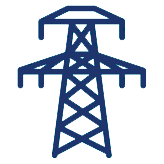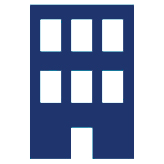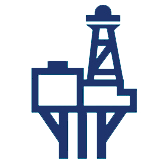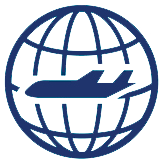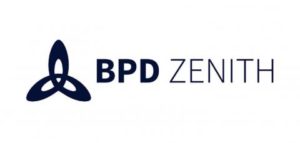
The UK rail industry has received significant investment1 as it bounces back from the Covid-19 pandemic. The latest figures show that passenger numbers are at 90% of pre-pandemic levels in the UK, demonstrating how dependent everyday people are on the industry prospering, as well as the importance of train organisations getting their enterprise asset management spot-on while in such high demand.
Network Rail, the owners and operators of the UK’s rail infrastructure, will spend £38 billion in the next 5 years on operating and expanding the network and the UK government has committed over £9 billion to deliver major improvements right across the country. This proves that the UK government is ambitious for the future of rail. 2
Meanwhile, as train organisations attempt to continually innovate, the Scottish Government recently approved electrification of the route between Haymarket and Dalmeny, to kickstart decarbonisation. Michael Matheson, Cabinet Secretary for Transport, Infrastructure and Connectivity of Scotland, has said that Scotland aims to “decarbonise our passenger rail services by 2035, five years ahead of the UK target”3.
Therefore, in a UK rail industry which is receiving continuous investment, and which is embracing new technologies, effective enterprise asset management promises to advance companies in the sector onto a new horizon.
How can Enterprise Asset Management (EAM) technology benefit rail organisations?
IBM Maximo Application Suite, the latest industry-leading EAM technology, provides significant benefits to train organisations in a number of key areas.
For example, the automated monitoring features available in Maximo Application Suite could be particularly beneficial to HS2, because they operate on a new concrete-based track. Meanwhile, organisations like Network Rail, which operate on a legacy track, could benefit from the mobile and workforce scheduling options available in Maximo Application Suite.
Three other priorities for organisations in the industry, which will be focused on in this article, are:
- Maintaining, demonstrating and reporting on compliance
- Cutting costs without compromising quality
- Guaranteeing safety of all passengers and staff
This article explores how these benefits are guaranteed by using Maximo®, as correctly implemented and supported by an IBM partner.
Maintain, demonstrate and report on compliance
It is essential for rail organisations that they maintain and report on compliance in-line with Rail Industry Standards (RIS).
RIS captures an approved approach to meeting an obligation or need, where the government cannot or should not impose a particular approach. This means that the Office of Rail and Road (ORR) can mould an RIS in the way that it finds most useful, for rail companies to adopt/use through their own management systems and/or impose it on others via contracts.

In-line with the requirements of the ORR, the Rail Safety and Standards Board (RSSB) helps to bring about improved health and safety performance throughout the British Rail network. Examples of Rail Industry Standards include:
- RIS 2702-RST for In-Service Examination and Reference Limits for Freight Wagons
- RIS 3703-TOM Passenger Train Dispatch and Platform Safety Measures
- RIS 7701-INS for Automatic Ticket Gates at Stations
- RIS 1800-ENE for Network and Depot Interface Management – Isolation Documentation
- RIS 1701-PLT Transportable plant noise Standard
- RIS 0794-CCS GSM-R Train Voice Radio
According to UK law, rail organisations need to prove that they are meeting certain standards – for example, regarding the maintenance of their track. It is essential that this proof can be provided because it enables rail companies to meet targets, report on compliance and performance as required, and maintain the safety of assets, staff and passengers.
Maximo® guarantees that you can maintain and report on compliance by managing standards, maintenance and safety activities within the Maximo® system. The processes enabled in Maximo® are approved for use by both Network Rail and RSSB. Therefore, Maximo® enforces that industry standards are met in a manner approved by the regulatory bodies.
Cutting costs without compromising quality
The average UK rail organisation makes a profit of less than 2% each year. When profit margins are this slim, efficiency needs to be optimised at all opportunities, and poor planning, increased reactive work and over maintaining assets must be eliminated. This need to cut costs is even more essential for public organisations like High Speed 2 (HS2) or Transport for London (TFL), which is operating Crossrail, as these organisations are set very rigid targets for cost reductions in a set period of time.
The right IBM Partner will empower you to create a strategy using Maximo® which demonstrates cost savings and efficiency improvements. The data which reinforces these improvements can then be shared with stakeholders to prove how and where the savings have been made.
One of the primary ways a rail organisation can use Maximo to make savings is by cutting down on maintenance costs. When Maximo® is implemented and used effectively, the amount of unplanned reactive maintenance completed by the rail organisation should decrease, and the efficiency of planned maintenance will increase. Using MAS applications such as Monitor and Predict, Maximo® users can make informed decision making, reduce costs, increase efficiency and support the safe running of the UK’s rail industry.
Ineffective EAM means that rail companies can run the risk of over-maintaining their assets (because they are using historical data, or sometimes no data at all, to inform decision making) and send out engineers more often than is necessary, which is costly.
It is also important to reduce the amount of reactive maintenance in the rail industry, as this work is typically completed by third party contractors, which is almost always more costly.
Guaranteeing safety of all passengers and staff
This article has already outlined how Maximo® enables improved regulatory compliance, which is a significant step to ensuring the safety of everyone who interacts with a rail line or train. But Maximo® also improves safety in other aspects, including:
- Making sure the asset is safe
- Guaranteeing engineers are safe when maintaining an asset
- Ensuring passenger safety
It is crucial that the safety of engineers in the rail industry is never compromised. For example, many engineers work near asbestos or extremely high voltage. Fortunately, not only does Maximo® log the existence of safety hazards in the system (so these can be anticipated prior to the event) but it can also support the organisation to manage permits and safe access, which ensures that you have the right specifications and permits before entering a hazardous area.
Maximo® is also an extremely convenient tool for reporting faults and incidents, if one occurs.
If you would like an in-depth discussion about your rail organisation’s EAM Strategy, and how you can plan for the long term, contact us now on info@peluk.org.
References (links open in new tabs):
1: https://www.gov.uk/government/news/1-billion-technology-investment-to-bring-railway-into-21st-century
2: https://assets.publishing.service.gov.uk/government/uploads/system/uploads/attachment_data/file/303255/UKTI_Rail_Brochure.pdf
3: https://www.transport.gov.scot/public-transport/rail/building-a-greener-railway/
Contact us now for a demo or more information about Maximo® EAM solutions for your organisation.
Call us on +44(0)20 3356 9629 or use our contact form below.
Contact us now
